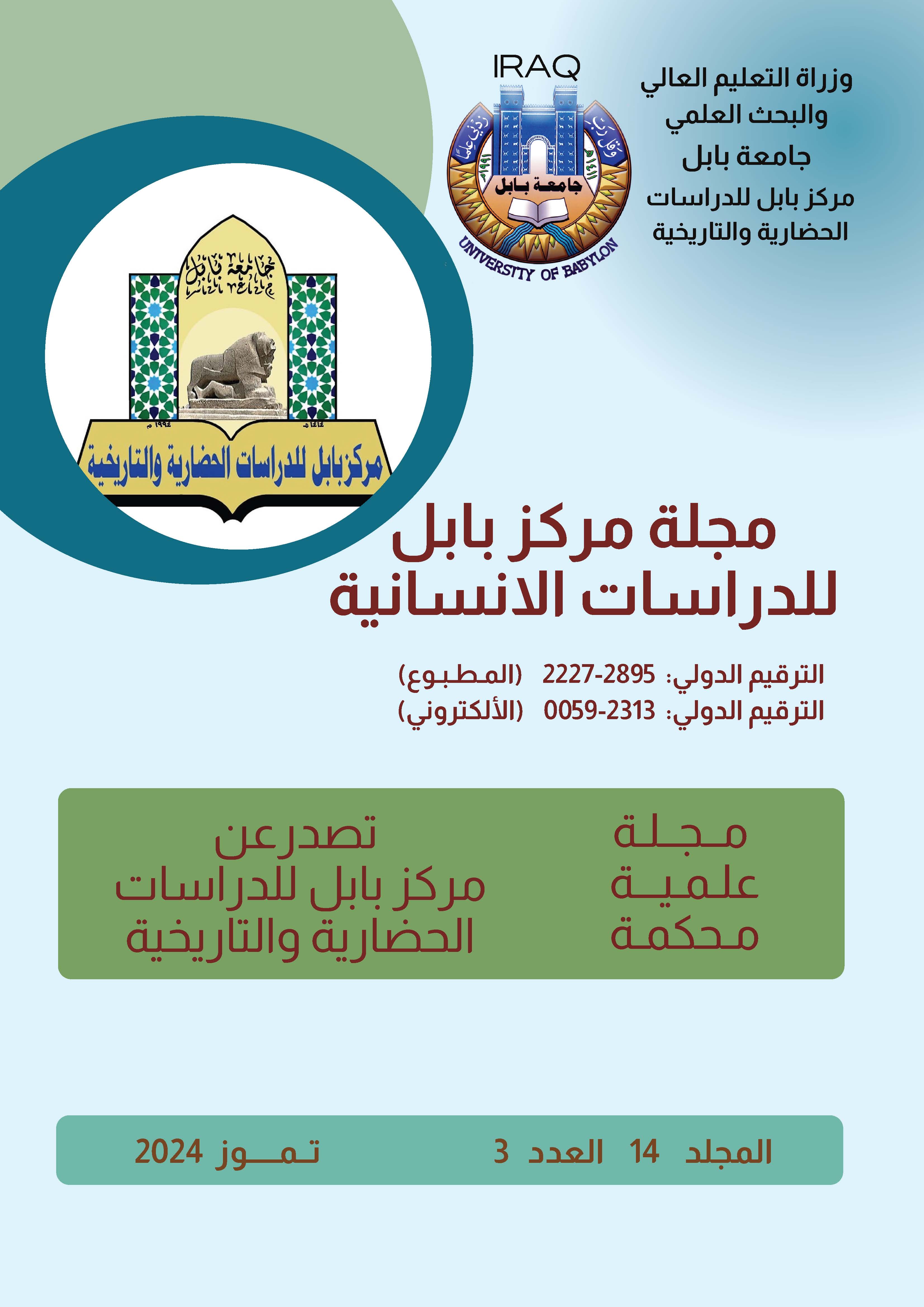The role of paradox in Arab criticism and its functions
Keywords:
Irony, Arabic criticism, verbal irony, text structure, artistic image.Abstract
The basic concept of paradox is that it refers to a conflict or contradiction between two elements or concepts in the same context or incident, and it can also be defined as “an incompatibility or contradiction between two opposite things.” Paradox has appeared in Western philosophy since ancient times, as it was used as a means to arouse interest in complex philosophical issues and stimulate philosophical debate.
As for literature, irony began to be used as a literary term in the eighteenth century AD, when it became a common means of creating certain literary effects in stories and poetry. The primary goal of using irony in literature was to enhance the artistic image of the text and increase its rhythmic and semantic effect.
Among the most common forms of irony in literature, we find formal irony, which is the use of words that express a certain meaning and mean the exact opposite in the context in which they are used, and semantic irony, which is the conflict of meanings between two concepts that are used in the same context.
In general, it can be said that irony is of great importance in literature, as it represents an effective tool for expressing complex and conflicting meanings and motivating readers to think deeply and critically analyze. It also constitutes an essential part of literary techniques that are used to create jokes, anecdotes, and suspense in literary works.
This thesis aims to address the technique of irony in the structure of narrative or novelistic text, in order to identify this technique more clearly between two contemporary writers (Saadawi and Ghanem) in an attempt to shed light on their novels as a form of criticism in modern literature and the extent of employing irony in revealing... Images that permeate the narrative text. She used sarcasm, puns, and contradiction in the narrative text in order to suggest to the reader something different from the apparent meaning of the text, to make the reader eager to know the end of the novel, which may be completely different from what the author suggested at the beginning of the text.







